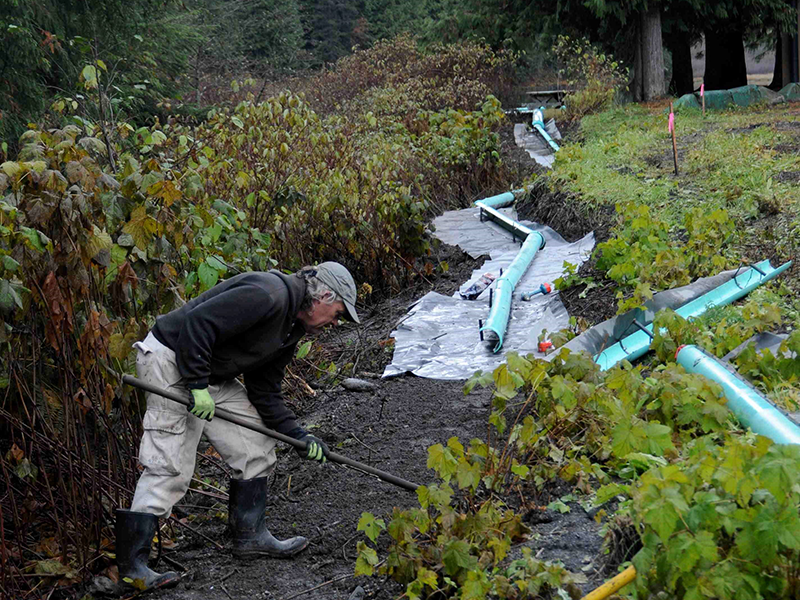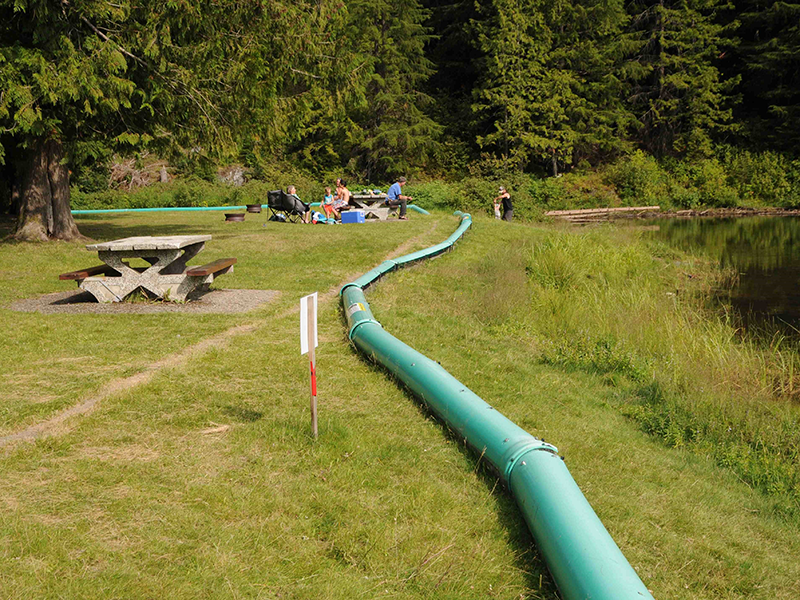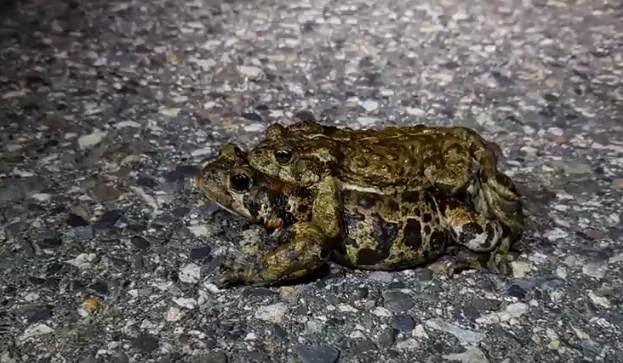Imagine a tiny toad attempting to cross a highway — that story doesn’t end well.
It’s fortunate we have partners such as Valhalla Wilderness Society (VWS) to help address this very situation that unfolds twice a year in a mountain pass migration corridor in the Selkirk mountains of southeastern British Columbia.
For five years, VWS studied western toads on Highway 31A near New Denver, B.C., aiming to address the high road death rate of migrating adult toads in the spring and toadlets in mid-summer and fall.
“This population of western toads attracted our attention because although remote, the highway is very popular for summer tourists traveling at the exact time of year that thousands of adults and tens of thousands of baby toadlets are trying to cross the highway during their migration cycles,” says biologist Marcy Mahr. “And, because toads require both upland and shallow lake habitats, a highway running through them can result in a lot of dead toads on the road.”
The thousands of visitors who stopped at the Fish Lake rest stop, along with residents, simply couldn’t witness the large numbers of toads being killed by vehicles any longer. Something needed to be done, and a fence that would divert toadlets away from the road proved to be the right solution to connect important pathways for these toadlets at one of the three high mortality hot spots.

In 2019, a 500-meter (1,640-foot) long permanent toadlet migration fence was completed and is now directing hundreds of thousands of toadlets safely away from the busy highway and under Highway 31A.
“It was a challenge since the fence design had to be functional, aesthetically acceptable and not present a safety hazard where the fence had to pass through the popular tourism rest stop at Fish Lake,” says project biologist Wayne McCrory. “Our unique ‘Made in the Kootenays’ design includes green commercial waterline pipe cut in half, with internal metal frames to hold the fence sections in place.”
Ecosystems can be broken up, or fragmented, by natural elements such as rivers or human infrastructure such as roads. When wildlife can’t follow their natural migration routes, the ecosystem’s health can suffer.
This project, one Y2Y is proud to support, is a great example of how the combination of research and a community’s determination to make a difference can result in big changes.
“Both the tourists and the toadlets love it! The fence has become a major toad interpretation site.”
Wayne McCrory, project biologist
The toad fence now leads migrating toadlets to a wooden bridge that allows them to cross safely under the Goat Creek bridge and continue their migration up the mountain to hibernate. The final sections of the custom-made fence were installed in July 2019, just in time for an estimated 200,000 or more toadlets on the move.
People were intrigued by this unique wildlife crossing and eager to help. In 2016, VWS started a “toad ambassador” program, where up to 16 local volunteers helped move more than 600 adult breeding toads and numerous migrating toadlets safely across the highway, as well as provided public outreach on busy weekends in August.

VWS notes that with a greater knowledge of toad migration patterns, highway crossings and mortality hot spots than when the research started in 2015, the toad team is now moving on to a mitigation implementation phase by working closely with B.C.’s Ministry of Transportation and Infrastructure to see two toad underpasses installed at key migration hot spots at Fish Lake.
How did Y2Y support it?
The Yellowstone to Yukon mission progresses because of collaboration. That’s why we’re proud to continue with our partner grants program — one that has been running since 1998.
Our mission is to connect and protect habitat so that people and nature can thrive, and wildlife crossings such as this toadlet fence are instrumental to stitching landscapes together for migrating wildlife.
Y2Y’s partner grant program is one of the ways we support organizations whose work underpins the Yellowstone to Yukon mission. These on-the-ground projects complement our efforts and mobilize work that we wouldn’t be able to do on our own. We are pleased to provide this financial foundation for the conservation community, because we know that it is only together that we will achieve success.
In 2019 alone, we invested more than $60,500 in 18 organizations for projects like this that will help protect and connect the habitat from Yellowstone to Yukon so people and nature can thrive.
Proud partners: More about Valhalla Wilderness Society
The Valhalla Wilderness Society was founded in New Denver, B.C. in 1975. Since then, it has spearheaded numerous successful campaigns, such as playing a major role in the creation of many new parks in British Columbia. They have also worked alongside many First Nations on issues of environmental and social justice.


